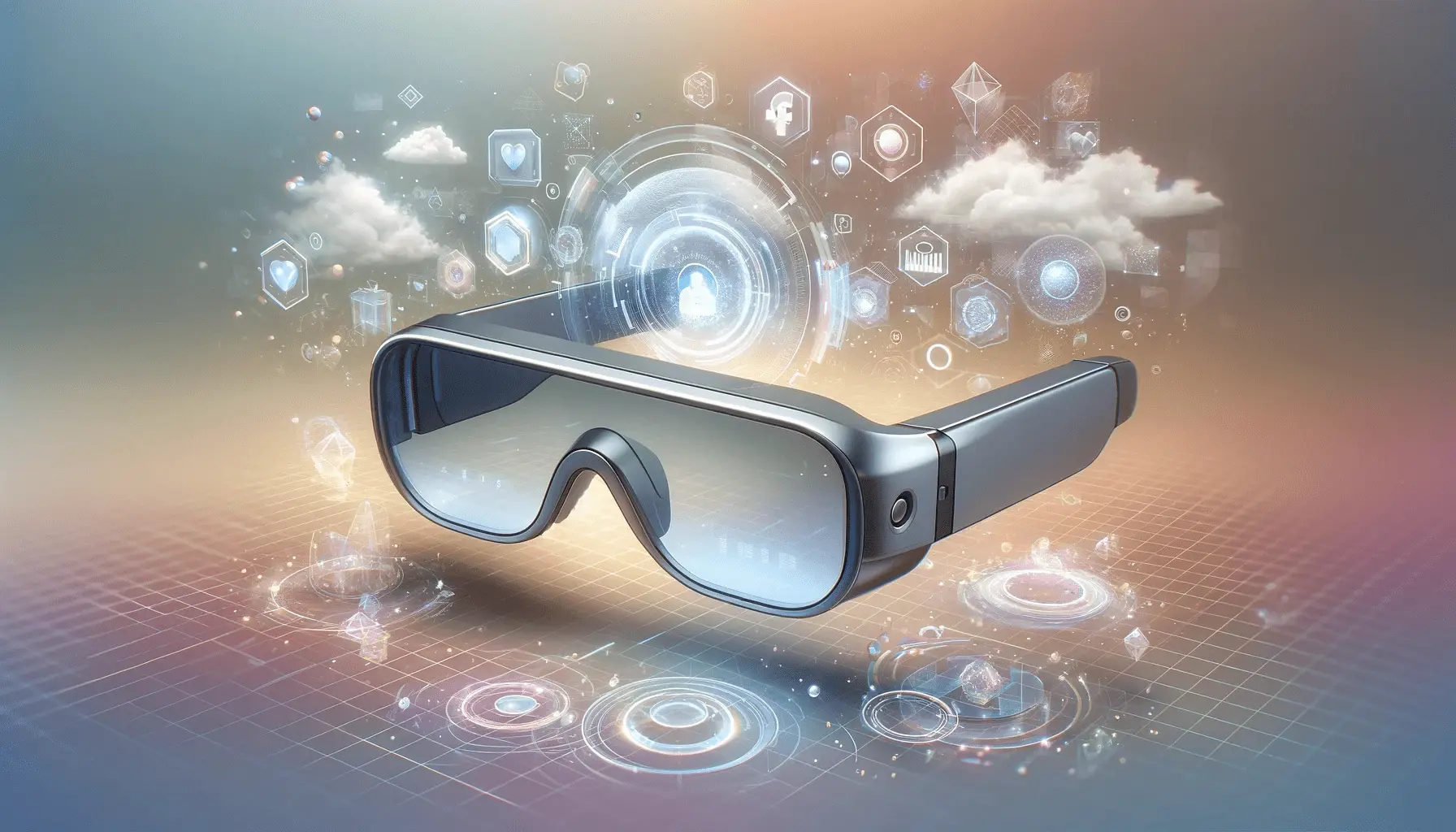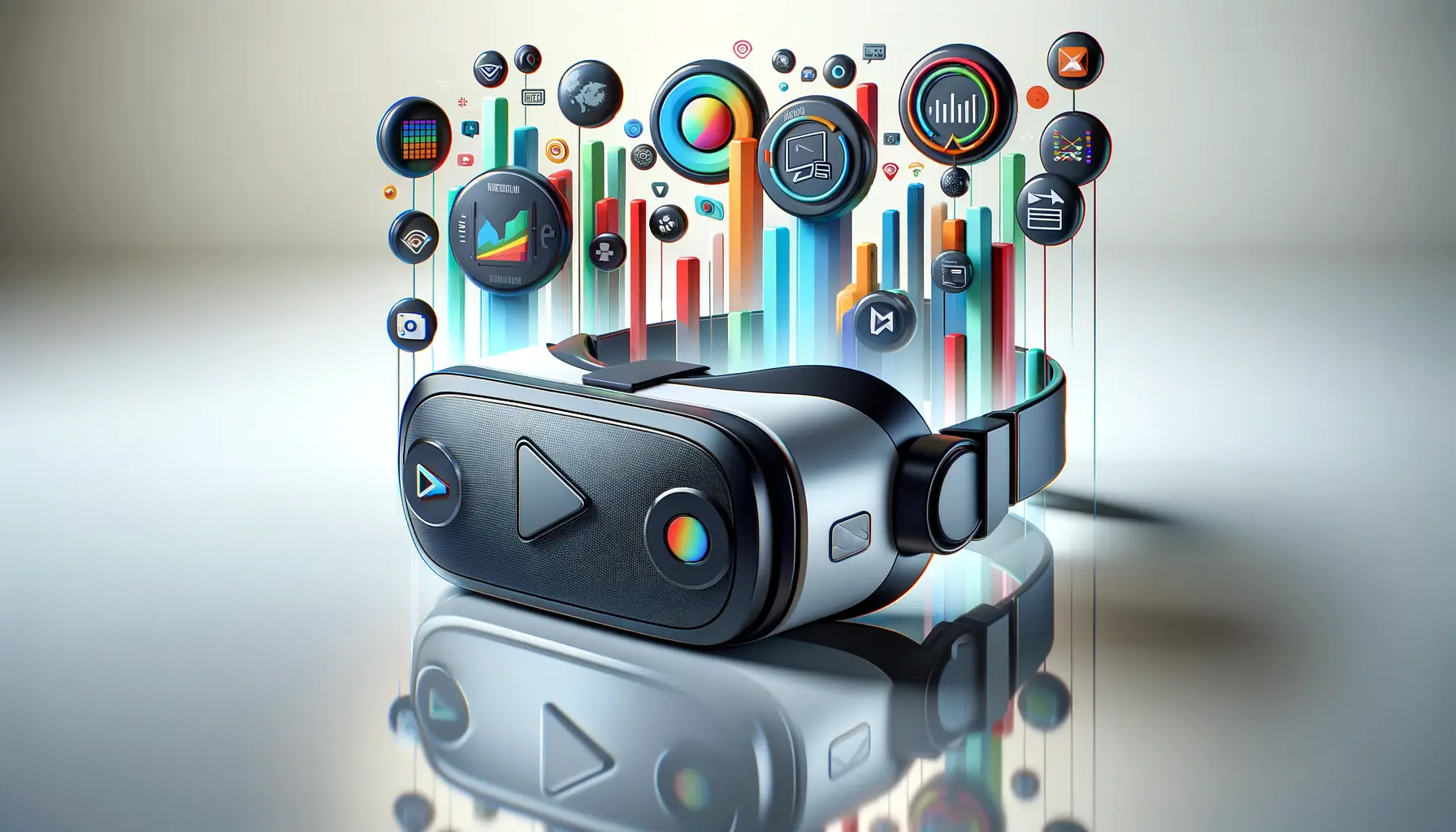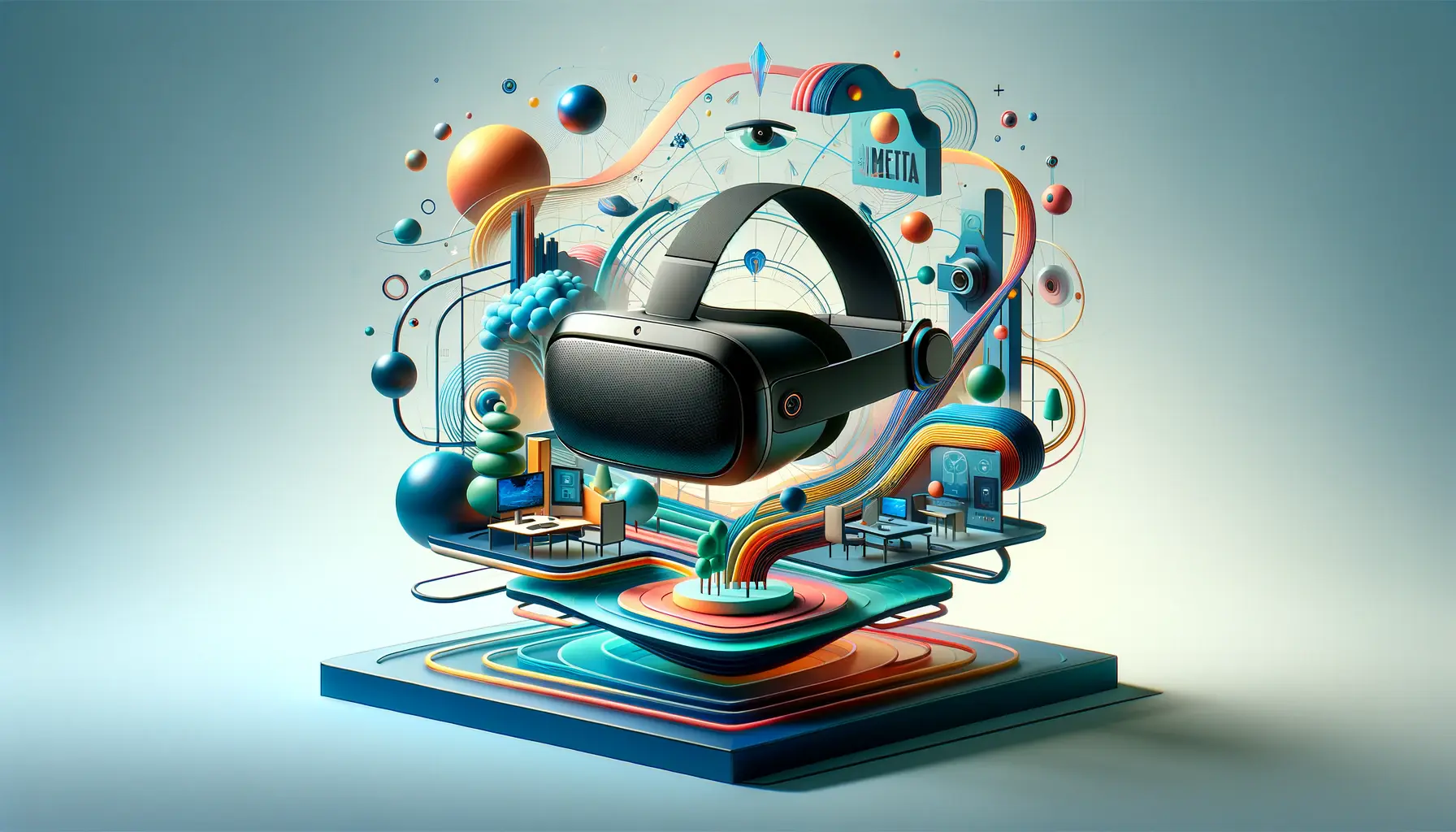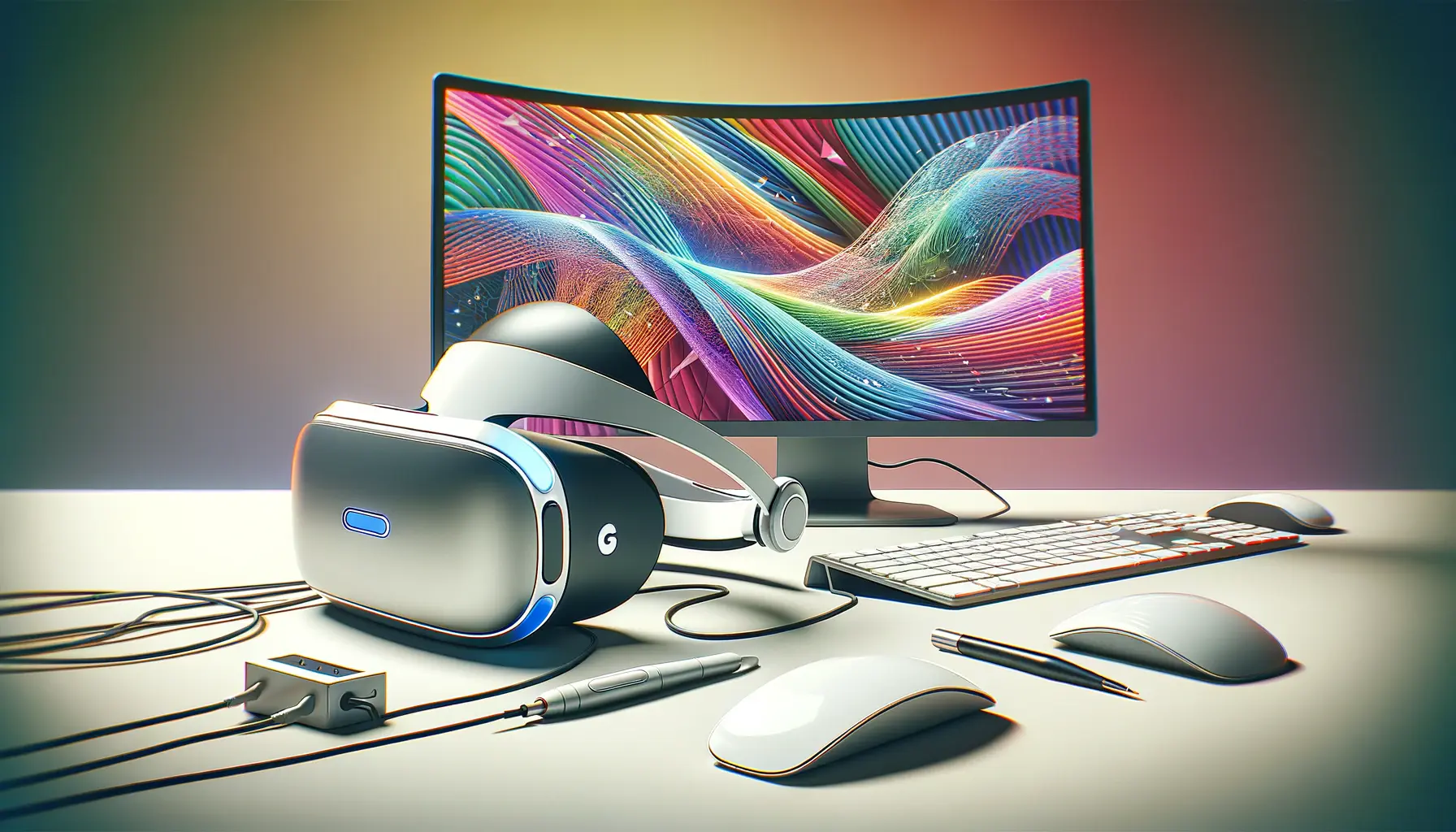The advent of augmented reality (AR) has revolutionized various sectors, with advertising being one of the most transformed.
Facebook, a platform at the forefront of social media innovation, has embraced AR to enhance its advertising capabilities.
This article delves into how augmented reality is reshaping the landscape of Facebook ads, offering a new dimension of interaction and engagement for users and advertisers alike.
Augmented reality in Facebook ads is not just a futuristic concept but a present reality that’s reshaping how brands connect with their audience.
By overlaying digital information onto the real world, AR ads on Facebook create immersive experiences that are both engaging and interactive.
This integration of AR technology into Facebook’s advertising platform opens up new avenues for creative storytelling and personalized marketing.
- The Evolution of Facebook Ads with Augmented Reality
- Enhancing User Engagement through AR Features
- Maximizing Brand Impact with AR-Driven Campaigns
- Challenges and Solutions in AR Advertising
- Future Trends in AR Advertising on Facebook
- Best Practices for Creating Effective AR Ads on Facebook
- Case Studies: Successful AR Ad Campaigns on Facebook
- Conclusion: The Transformative Power of Augmented Reality in Facebook Ads
- FAQs on Augmented Reality in Facebook Ads
The Evolution of Facebook Ads with Augmented Reality
Facebook’s journey into augmented reality advertising began as an experiment but quickly evolved into a robust platform for immersive ad experiences.
Initially, AR in ads was a novel idea, used sparingly by a few forward-thinking brands.
However, as technology advanced and user engagement metrics soared, more businesses began to recognize the potential of AR in enhancing ad effectiveness.
The evolution of AR in Facebook ads is marked by increased interactivity and personalization.
Users can now try on products virtually, visualize items in their space, or engage with fun, interactive filters, all within the Facebook app.
This leap from static images and videos to dynamic, interactive experiences represents a significant shift in how brands can engage with their audience on social media.
Interactive Product Demonstrations
One of the most impactful uses of AR in Facebook ads is the ability for users to interact with products.
Brands like cosmetic companies and fashion retailers are leveraging AR to offer virtual try-ons. This not only enhances the user experience but also aids in reducing the uncertainty that online shoppers often face.
By allowing users to see how a product looks on them, AR ads significantly improve the decision-making process.
For instance, a makeup brand can use AR to let users try different shades of lipstick or eyeshadow, providing a realistic preview of the products.
This level of interaction not only boosts engagement but also drives higher conversion rates, as users are more likely to purchase a product after virtually trying it.
Augmented reality in Facebook ads is transforming the way brands interact with their audience, offering immersive experiences that lead to higher engagement and conversion rates.
Enhancing User Engagement through AR Features
Augmented reality in Facebook ads has opened up a plethora of opportunities for enhancing user engagement.
By integrating AR features, ads become more than just a passive viewing experience; they turn into interactive sessions that captivate the audience’s attention.
This section explores various AR features that are elevating user engagement on Facebook.
Virtual Reality Experiences in Everyday Scenarios
AR ads on Facebook allow users to immerse themselves in virtual scenarios that are both entertaining and informative.
These experiences range from virtual tours of real estate properties to interactive game-like environments showcasing products.
By engaging users in these unique virtual experiences, brands can create a memorable impression that goes beyond traditional advertising.
- Real Estate Virtual Tours: Potential buyers can explore properties in a 360-degree virtual environment, getting a feel of the space without physically being there.
- Interactive Games: Brands can create game-like experiences where users interact with products in a fun and engaging way, enhancing brand recall.
Personalized Shopping Experiences
AR technology in Facebook ads is revolutionizing the shopping experience by personalizing it to each user.
This personalization is not just about recommending products but also about allowing users to see how these products would fit into their lives.
- Home Decor Visualization: Users can visualize how furniture or decor items would look in their own space, helping them make more informed purchasing decisions.
- Clothing and Accessories Try-On: Fashion brands are using AR to let users try on clothes and accessories virtually, providing a new level of convenience in online shopping.
These personalized experiences are not only fun and engaging but also practical, helping users make better purchasing decisions.
By reducing the guesswork involved in online shopping, AR ads are setting a new standard in e-commerce.
The integration of AR in Facebook ads is not just a technological advancement but a paradigm shift in how users interact with and perceive online advertising.
Maximizing Brand Impact with AR-Driven Campaigns
Augmented reality in Facebook ads is not just about creating engaging content; it’s also a powerful toolfor maximizing brand impact.
By leveraging AR-driven campaigns, brands can create a lasting impression that resonates with their audience.
This part of the article explores how AR is being used to amplify brand messaging and create impactful campaigns on Facebook.
Storytelling with Augmented Reality
AR brings a new dimension to storytelling in advertising.
Brands are using AR to tell their stories in a way that’s interactive and immersive, making a deeper emotional connection with their audience.
This storytelling approach goes beyond traditional narratives, allowing users to be part of the story.
- Interactive Narratives: Brands create interactive stories where users can choose different paths, leading to different outcomes. This not only engages users but also increases the time spent with the ad.
- Emotional Engagement: By creating immersive experiences, AR ads can evoke stronger emotional responses, making the brand message more impactful and memorable.
Leveraging User-Generated Content
User-generated content (UGC) plays a crucial role in AR advertising on Facebook.
Brands encourage users to create their content using branded AR filters and share it on their social networks.
This not only increases engagement but also amplifies the reach of the campaign through organic sharing.
- Branded AR Filters: Brands create custom AR filters related to their products or campaigns, encouraging users to use these filters and share their experiences.
- Organic Reach: When users share their AR experiences, it extends the reach of the campaign organically, creating a ripple effect of engagement and brand exposure.
AR-driven campaigns on Facebook are redefining how brands interact with their audience, creating experiences that are not just seen but felt and shared.
This approach to advertising is proving to be more effective in creating lasting brand impressions.
Augmented reality in Facebook ads is a game-changer for brands, offering innovative ways to tell stories, engage users, and amplify their message.
Challenges and Solutions in AR Advertising
While augmented reality in Facebook ads presents numerous opportunities, it also comes with its own set of challenges.
Understanding and addressing these challenges is crucial for brands to effectively leverage AR in their advertising strategies.
This section discusses common hurdles and practical solutions in AR advertising on Facebook.
Technical Complexity and User Accessibility
One of the primary challenges of AR advertising is the technical complexity involved in creating AR experiences.
Additionally, ensuring these experiences are accessible and user-friendly is crucial for widespread adoption.
- Simplifying AR Creation: Brands can collaborate with AR development platforms or use simplified AR creation tools offered by Facebook to overcome technical barriers.
- Ensuring Compatibility: It’s important to ensure AR experiences are compatible with a wide range of devices and do not require high-end specifications for accessibility.
Measuring Effectiveness and ROI
Another challenge is quantifying the effectiveness of AR ads and determining their return on investment (ROI). Unlike traditional ads, the impact of AR ads is not just in clicks and views but also in the level of engagement and brand recall.
- Advanced Analytics: Utilizing advanced analytics tools to measure user engagement, interaction time, and conversion rates can help in assessing the effectiveness of AR ads.
- Qualitative Feedback: Gathering user feedback on their AR experience can provide insights into the qualitative impact of the ads, complementing quantitative metrics.
By addressing these challenges with practical solutions, brands can harness the full potential of AR in Facebook advertising, creating campaigns that are not only innovative but also effective and accessible.
Overcoming technical and measurement challenges is key to the successful implementation of AR in Facebook ads, ensuring both innovation and effectiveness.
Future Trends in AR Advertising on Facebook
The landscape of augmented reality in Facebook advertising is continuously evolving, with new trends emerging as technology advances.
Staying ahead of these trends is crucial for brands looking to leverage AR for maximum impact.
This section explores the future directions and potential innovations in AR advertising on Facebook.
Integration with E-commerce and Online Shopping
One significant trend is the deeper integration of AR with e-commerce and online shopping.
As online shopping continues to grow, AR can play a pivotal role in bridging the gap between digital and physical shopping experiences.
- Virtual Try-Ons: Enhanced AR features for trying on clothes, accessories, and makeup virtually will become more sophisticated, providing users with a near-real shopping experience.
- Product Visualization: AR tools that allow users to visualize products in their own environment will become more accurate and realistic, aiding in purchase decisions.
Advancements in AR Technology
Technological advancements will continue to shape the future of AR in advertising.
These advancements will not only improve the quality of AR experiences but also make them more accessible and user-friendly.
- Improved Realism: Advances in AR technology will lead to more realistic and immersive experiences, blurring the lines between virtual and real.
- Accessibility: As AR technology becomes more mainstream, it will become more accessible, allowing a wider range of brands to create AR experiences.
The future of AR in Facebook advertising is poised to be dynamic and transformative.
With continuous technological advancements and creative innovations, AR is set to redefine the advertising landscape, offering unprecedented opportunities for brands to engage with their audience in meaningful and memorable ways.
The future of AR in Facebook advertising holds immense potential, with advancements in technology and integration with e-commerce set to revolutionize the way brands interact with consumers.
Best Practices for Creating Effective AR Ads on Facebook
To harness the full potential of augmented reality in Facebook ads, it’s essential to follow best practices that ensure the effectiveness and appeal of your AR campaigns.
This section outlines key strategies and tips for creating AR ads that resonate with audiences and achieve desired marketing objectives.
User-CentricDesign
Designing AR experiences with the user in mind is crucial for engagement and effectiveness.
The focus should be on creating intuitive and enjoyable interactions that enhance the user’s experience with the brand.
- Simplicity: Keep the AR experience simple and easy to navigate to ensure it’s accessible to a broad audience.
- Relevance: Design AR features that are relevant to the product and resonate with the target audience.
Seamless Integration with Ad Content
Integrating AR features seamlessly with the overall ad content is vitalfor a cohesive and impactful campaign.
The AR experience should complement and enhance the ad’s message, not overshadow it.
- Consistent Branding: Ensure that the AR experience aligns with your brand’s identity and message.
- Contextual Relevance: The AR features should be contextually relevant to the ad’s content, providing a natural extension of the campaign narrative.
Continuous Testing and Optimization
Like any digital advertising strategy, AR ads require continuous testing and optimization to maximize their effectiveness.
Analyzing performance data and user feedback is key to refining AR experiences.
- A/B Testing: Test different versions of your AR ad to determine which elements resonate most with your audience.
- User Feedback: Gather and analyze user feedback to understand how your AR ad is perceived and how it can be improved.
By adhering to these best practices, brands can create AR ads on Facebook that not only captivate and engage users but also effectively convey their marketing message and achieve campaign goals.
Effective AR ads on Facebook are user-centric, seamlessly integrated with ad content, and continuously optimized based on testing and user feedback.
Case Studies: Successful AR Ad Campaigns on Facebook
Examining real-life examples of successful augmented reality ad campaigns on Facebook can provide valuable insights into the effective use of this technology.
This section highlights notable case studies that demonstrate the impact and creativity of AR in advertising.
Innovative Product Launches
Brands have utilized AR in Facebook ads to launch new products in an engaging and interactive manner, significantly boosting awareness and customer interest.
- Interactive Product Demos: Companies have used AR to let users virtually experience new products, providing an immersive preview before purchase.
- Enhanced Brand Awareness: These campaigns have successfully generated buzz and heightened brand visibility around product launches.
Driving User Engagement and Sales
AR ad campaigns on Facebook have also been instrumental in driving user engagement and sales, showcasing the direct impact of AR on marketing ROI.
- Increased Engagement: Brands have reported higher user interaction rates with AR ads compared to traditional formats.
- Boost in Sales: The immersive nature of AR ads has led to increased sales, as users are more inclined to purchase after engaging with AR experiences.
These case studies underscore the effectiveness of AR in enhancing advertising campaigns on Facebook.
By offering unique, immersive experiences, AR ads have the potential to significantly elevate brand presence and drive consumer action.
Real-life case studies of AR ad campaigns on Facebook highlight the technology’s ability to innovate product launches and drive user engagement and sales.
Conclusion: The Transformative Power of Augmented Reality in Facebook Ads
The integration of augmented reality into Facebook advertising represents a significant leap forward in digital marketing.
As we have explored throughout this article, AR brings a new dimension of interactivity and personalization to ads, transforming how brands engage with their audience and how consumers experience online shopping.
The immersive nature of AR in Facebook ads not only enhances user engagement but also provides innovative ways for brands to tell their stories, showcase their products, and ultimately drive sales.
Revolutionizing Brand-Customer Interactions
Augmented reality in Facebook ads has revolutionized the way brands interact with customers.
By offering immersive and interactive experiences, AR ads have opened up new avenues for creative storytelling and personalized marketing.
These advancements are not just technological but represent a paradigm shift in advertising strategies, focusing more on user experience and engagement.
- Enhanced User Engagement: AR ads captivate users’ attention by offering interactive and personalized experiences, leading to higher engagement rates.
- Memorable Brand Experiences: By creating immersive AR experiences, brands can leave a lasting impression on users, enhancing brand recall and loyalty.
Setting the Stage for Future Innovations
The future of augmented reality in Facebook ads is bright, with continuous advancements in technology paving the way for more sophisticated and accessible AR experiences.
As AR becomes more integrated with e-commerce, it will play a crucial role in shaping the future of online shopping, offering users a seamless blend of the digital and physical worlds.
- Technological Advancements: Future developments in AR technology will lead to more realistic and immersive ad experiences, further blurring the lines between virtual and real.
- E-commerce Integration: AR will become an integral part of the online shopping experience, offering users a new level of convenience and personalization.
In conclusion, augmented reality in Facebook ads is not just a fleeting trend but a transformative force in digital advertising.
Its ability to create engaging, interactive, and personalized experiences positions AR as a key player in the future of marketing and e-commerce. As technology continues to evolve, we can expect AR to further redefine the advertising landscape, offering exciting possibilities for brands and consumers alike.
Enjoyed the article? Let its author handle your social media ads. Visit our service page to get started!
FAQs on Augmented Reality in Facebook Ads
Explore commonly asked questions about the innovative world of augmented reality in Facebook advertising.
Augmented Reality Ads on Facebook are interactive ads that use AR technology to create immersive experiences directly fromthe ad, enhancing user engagement and interaction with products.
To create an AR ad, go to Ads Manager, select a campaign objective supporting AR, and integrate your AR content using Facebook’s tools or Spark AR Studio.
Yes, incorporating AR camera effects in Facebook ads can significantly enhance campaign performance by increasing user engagement and interaction.
AR experiences for ads can range from virtual product try-ons and interactive games to immersive storytelling and realistic product visualizations.
AR ads are effective in driving sales as they offer immersive experiences that lead to higher user engagement and a better understanding of products.
Key metrics for AR ads include user engagement rates, interaction time, conversion rates, and qualitative feedback on the AR experience.
AR ads enhance online shopping by allowing users to visualize products in their environment and try products virtually, leading to informed decisions.
Future trends in AR advertising include deeper e-commerce integration, more realistic AR experiences, and wider accessibility due to technological advancements.










